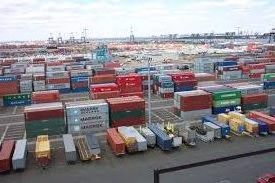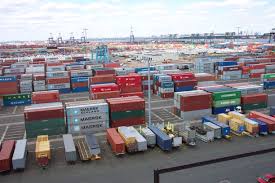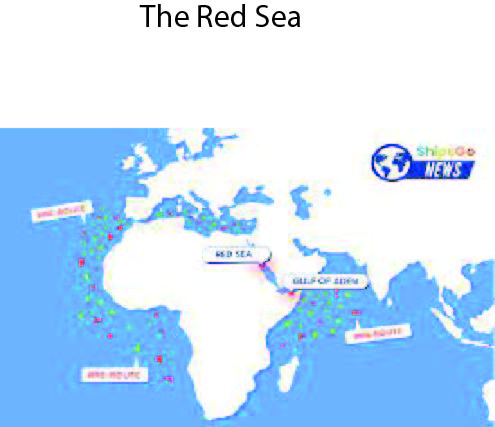Abstract
The research of port logistics supply chain has become a key point in the research of port logistics quandary.Because of increasingly fierce market competition and mutable business environment, the port logistics supply chain often face the dubious risk , and the diversity of market demand determines the port logistics supply chain must have highly flexible, the construction of flexible supply chain for the port logistics industry is an exigent task. Port security threats are equally threats to global logistics and supply chain. As ports are described as important nodes of supply chain, disruptions in ports can cause disruption in global supply chains. So, if threats are identified in the ports internal and external systems, it can make global supply chain more risk free. A contemporary port has been transformed to that extent that they have become a significant contributor to the supply chain network. And ports are important as critical part of global supply chain and global security. The contemporary ports can continue to transform it as a center of knowledge based global supply chain. Port ownership and development strategy has undergone a profound change, which are very important to the supply chain network.
Keywords: Port, supply chain security, logistics,globalization.
Introduction:
The world trade cannot be materialized without the help of port mechanism. The ports must be advanced to materialize world trade. Due to the pressure of globalization to world trade and global supply chain, results in increased pressure on ports and its operational efficiency. Our aim is to discuss below the port mechanism in context of supply chain management.
Factors interacting
In this Supply Chain mechanism key actors are the shipping company, the terminal operator, the logistics operator, the haulers, railway operator, warehouse and multi-modal transport operator and agents who work in jetty and customs. In the supply chain theory it is a hypothesis that supply chain is positively related to specific measures of port performance and competitiveness. This is related to the contemporary logistics goals.

The key factors
The research of port logistics supply chain has become a sultry and key point in the research of port logistics quandary.Because of increasingly fierce market competition and mutable business environment, the port logistics supply chain often face the dubious risk and frangible, and the diversity of market demand determines the port logistics supply chain must have highly flexible, the construction of flexible supply chain for the port logistics industry is an exigent task.[1]
Ports in global supply chain
Ports are considered as chain of the companies which create value to the customer. And ports are important as critical part of global supply chain and global security. It is mentionable that about 60% of cross border trade moves through waters/ports.
Supply chain optimization
In the modern world port is an integral part of global supply chain. And the port has a big increase in volumes, which they handle. For which every country is trying to increase their port’s efficiency. So that, their competitiveness increase in comparison to others and they can handle their inbound and outbound cargo. There is an integrated logistic network also which helps the port to be fully capable to use its capabilities. There should be a framework who will bear the cost of these networks in the supply chain .They should meet the lowest time to receive and deliver goods.
Transformation of ports
A contemporary port has been transformed to that extent that they have become a significant contributor to the supply chain network. Once there was convenience of cargo storage, but eventually services such as cargo distribution, packing becomes port function for ports of the second generation. The third generation ports are giving services such as cooperation in information sharing and exchanges between different stakeholders. Port ownership and development strategy has undergone a profound change, which are very important to the supply chain network.
Link within a Supply Chain Network
Ports are critical links that deliver and capture value in supply chain systems. Because, ports are administering the connection of logistical functions throughout supply chains that render its influence on cargo flow along supply chains. The contemporary ports can continue to transform it as a center of knowledge based global supply chain.
Supply Chain disruptions
Resilience of entities in supply chain has been emphasized in many studies. As ports are described as important nodes of supply chain, disruptions in ports can cause disruption in global supply chains. Strategies that the ports can be utilized by ports are so extensive that it almost equally helpful to all industries. Port security threats are equally threats to global logistics and supply chain. So, if threats are identified in the ports internal and external systems, it can make global supply chain more risk free. Global collaboration in this area already initiated by such programs as C-TPAT (Customs -Trade Partnership against Terrorism) . There are other quantitative approaches also applied to understand the impact on the total network and supply chain system.
An example of Chittagong port
For the inbound and outbound cargo, the main exit point is Chittagong port in Bangladesh. There is increasing container throughputs in Chittagong ports, which leads to congestion in the port. This eventually ends up in Feeder Vessel delays and reaching time to the destination ports. Inbound pressure of imported food items increased space shortage and congestion in the port.
Conclusion
For the inbound In short, Port situations are closely related with Supply Chain Management as a whole. For this reason, Supply Chain Managers keep a close eye to the port situation to make their targets attained and they can manufacture their product in time and hand over the output to the customer also.
References:
1.Shi, Lan.(2015). “A Study on Port Logistics Supply Chain and Its Flexibility Operation Mechanism in Guangxi Beibu Gulf Based on the Fourth Generation Port Theory”. https://www.atlantis-press.com/proceedings/msmi-15/25836089.Pages.1





